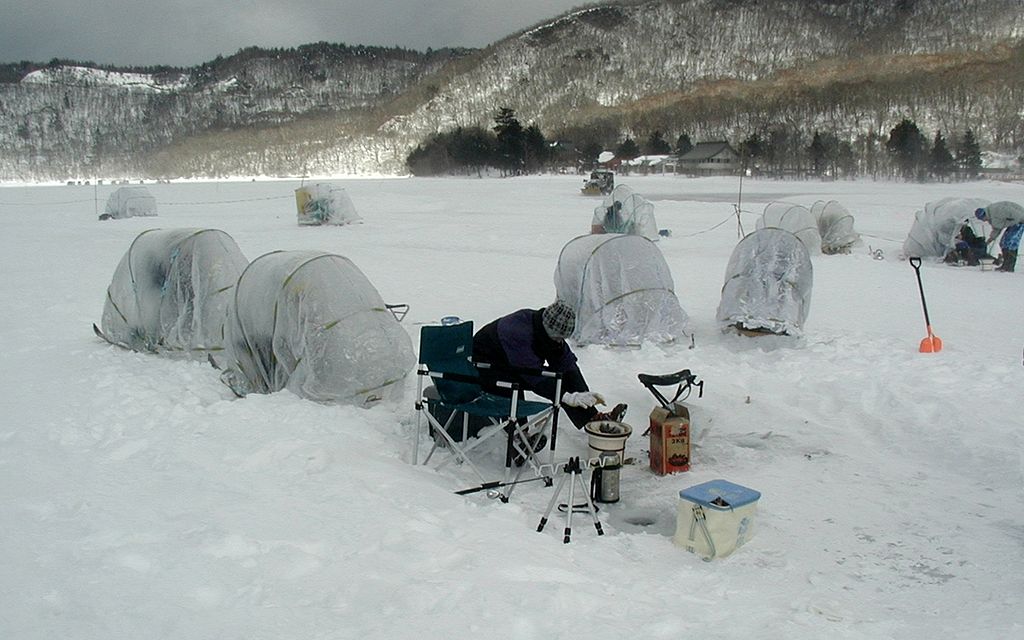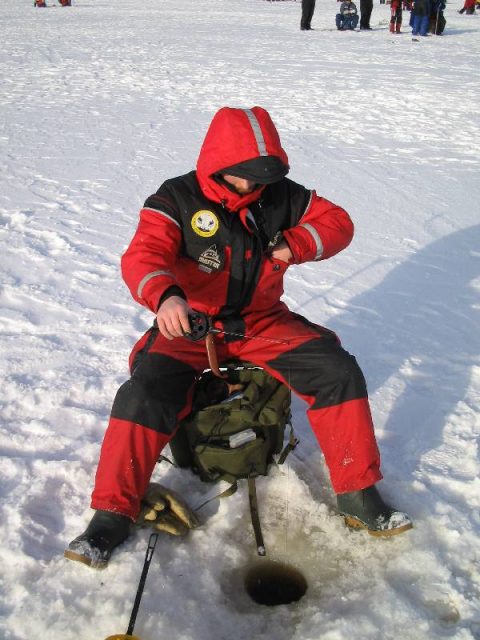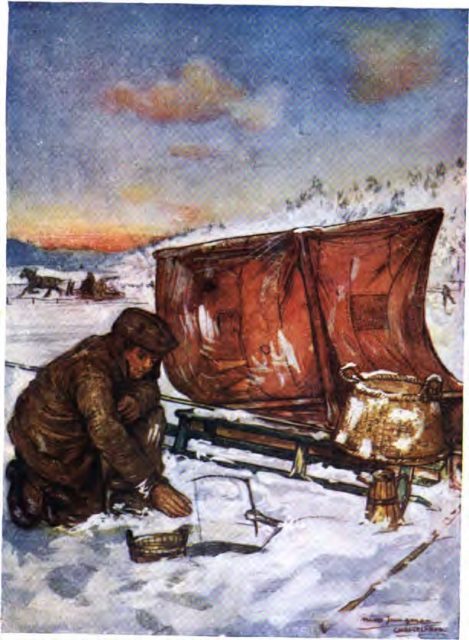Beginners’ List for a Successful Day of Ice Fishing

Some people in North America dream each year for the day the lakes freeze over. Why? To go ice fishing. Ice fishing in the northern states is taken seriously by many, as much as hunting. In fact, there are many tournaments that take place to see who can catch the largest fish. If you were to drive past a frozen lake, you would see dozens of ice shacks with fishers out there from dawn until dusk waiting for that certain fish.
For any of you who have never gone ice fishing, you ought to try it at least once. It can actually be a family activity for little kids, too. However, if this is your first time trying ice fishing, don’t forget your brand new fishing license!

There are many different ways to ice fish. Some people prefer to sit on a chair or a bucket and jig for fish, gently jerking the line up and down to make the bait seem alive. Some prefer tip-ups which do the work for them. They place a minnow on the end of the hook, put the flag down, and when a fish bites, the flag will “tip up” to notify the fisher that there’s a fish on the line.
Others prefer bringing an ice shack. Many ice shacks have little heaters so that fishers can take a break and warm up, especially if they are avid fishers who stay the whole day. Some people pitch a little ice fishing tent to at least get out of the wind. There are so many different ways to enjoy it.
If you’re going to try ice fishing, make sure to layer your clothing. If you get too hot, you can always take off the extra layers. Even if you have an ice shack, layers are key to staying comfortable and safe during your first fishing excursion. For the first layer, you’re going to want to make sure you’re always dry.
Try some moisture-wicking material. If you’re sweating, sweat can make you cold instantly and could possibly lead to hypothermia, depending on how cold it is outside. Not only should your shirt be moisture-wicking, but make sure your long underwear, socks, and extra mittens are as well.
Although cotton is warm, it doesn’t dry very fast, especially in frigid temperatures. Be sure to wear warm boots, but the trick to keeping your circulation up is to keep the boots untied until you reach the ice. Always carry hand and foot warmers, even on some of the warmer days.
Your next layer should be something like wool. It wicks away moisture and is one of the warmest materials to use. If it’s windy, be sure to pack a face mask and a hat with ear flaps. If you’re already an avid fisher, then you probably have a one-piece insulated suit for the coldest days you’re out there.
Again, if it’s a windy day you’ll want to find a jacket with some kind of wind-breaking properties. Jackets that have a nylon outer layer are perfect for this.
As stated above, boots are the best type of shoe for a day out on the ice. Your feet are going to be the closest thing to the ice and snow on the lake. This means the cold will seep through the bottom of your shoes if you don’t pack the right ones. Make sure you have extra-large boots in order to fit a few pairs of socks into them.
Rubber soles are the best for this activity since it will keep away the moisture of the ice and snow.
If this is your first-time ice-fishing, consider renting a fishing shack instead of purchasing one in case you don’t like the sport. That way, at least you didn’t splurge on an ice shack that would be only used once. Lakes with sporting lodges near may be the place to rent a shack.
Generally, leaving the ice shacks out on the ice doesn’t prove to be an issue until the spring. Once the weather warms up, ice shacks must be removed daily in case the lake would crack. Then, you would be out an expensive ice shack. Since all lakes are different, be sure to check the ice shack regulations, so you don’t get a fine.

In order to make the most of your trip, make sure you put out tip ups (if you’re using them) some distance apart. Not only will this increase your chance of catching some fish, but it will help you keep moving, staying warm in the process. Some people even bring ice skates for entertainment while waiting for their fish to bite. Don’t forget some warm foods and drinks. Soup, hot chocolate, coffee, and tea are good treats to have on the ice.
Since some areas are warmer than others, make sure your ice is at least four inches thick. Even if it’s thick enough in one area, that doesn’t mean the whole lake is that thick. Be safe!
If it’s your first time fishing a certain place, keep a compass with you, especially if you’re moving around to different spots to try. Due to the vast space of the lake and the white featurelessness of the snow, getting lost can happen quickly, EEK reported.
Last but not least – the tool list! Take a sled to pack up all of your things. You’ll need an ice drill, and a skimmer to take the excess ice out of the drilled hole. You’ll also need a bait bucket; minnows work best to catch the good fish! A seat would be good, especially if you’re jigging. Most ice shacks will have a little bench. If you’re taking little kids, be sure to pack a make-shift potty – you never know when you’ll need it!
